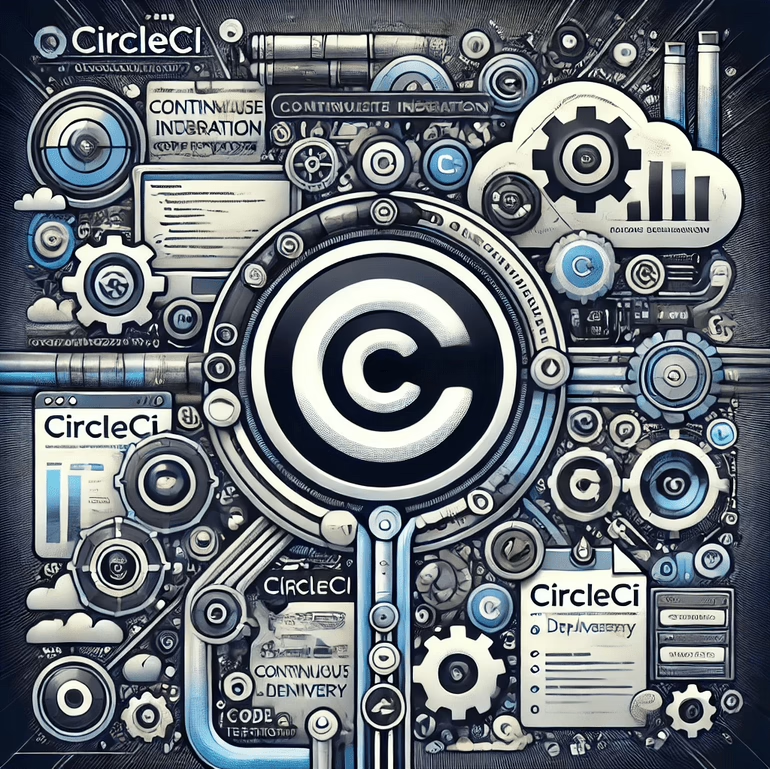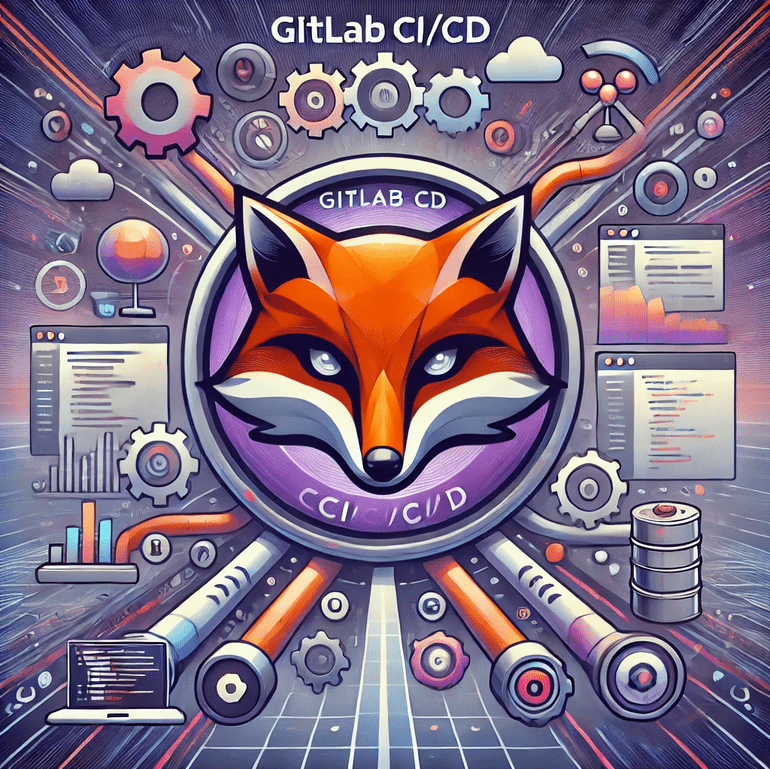SaltStack:
The Ultimate Solution for IT Automation
In today’s fast-paced digital landscape, organizations are constantly seeking ways to streamline their IT operations, enhance efficiency, and reduce human error. One tool that has emerged as a game-changer in this space is SaltStack. Often referred to simply as Salt, SaltStack is an open-source configuration management and orchestration tool that empowers organizations to automate the deployment and management of infrastructure, applications, and services. With its emphasis on speed, scalability, and flexibility, SaltStack has become a go-to solution for managing large-scale and complex IT environments.
In this blog post, we’ll dive deep into the key features and components of SaltStack, and explore how it can be a pivotal asset for your organization. Additionally, we’ll discuss how Curate Consulting Services can assist you in finding specialized talent to harness the full potential of SaltStack for your IT operations.
The Evolution of IT Automation
Before we delve into the specifics of SaltStack, it’s important to understand the context in which it was developed. The concept of “Infrastructure as Code” (IaC) has revolutionized IT management. Traditionally, managing IT infrastructure required manual intervention, which was not only time-consuming but also prone to errors. As organizations grew and became more complex, the need for automated, repeatable processes became apparent.
This is where configuration management tools like SaltStack come into play. By treating infrastructure as code, these tools allow IT teams to define and manage their environments through code, ensuring consistency, reliability, and speed. SaltStack stands out in this domain due to its robust architecture, comprehensive feature set, and ability to scale seamlessly with organizational needs.
Key Components and Features of SaltStack
1. Minion-Master Architecture
At the heart of SaltStack’s functionality is its Minion-Master architecture. This architecture allows for centralized control and orchestration of configurations and tasks across a vast number of nodes. The Salt Master server acts as the control hub, managing and communicating with multiple Salt Minions (target systems). This architecture is particularly beneficial for organizations with large, distributed IT environments, as it provides a single point of control for managing configurations across all systems.
This centralized control not only simplifies management but also enhances security and consistency, ensuring that all nodes adhere to the same configuration standards.
2. Salt States
Salt States are the backbone of SaltStack’s configuration management capabilities. These states are expressed in simple, human-readable YAML files that define the desired state of a system or application. Whether it’s installing a package, managing files, or starting services, Salt States enable you to automate and standardize these tasks across your entire infrastructure.
The beauty of Salt States lies in their simplicity and reusability. Once a state is defined, it can be applied to any number of systems, ensuring that they all conform to the same configuration standards. This is particularly useful in environments where consistency and compliance are critical.
3. Pillar Data
When it comes to managing sensitive or system-specific information, SaltStack’s Pillar Data feature is invaluable. Pillar Data allows you to store and manage credentials, configuration data, and other sensitive information securely. This data is then accessed by Salt Minions, enabling customizable configurations on a per-minion basis.
The ability to manage sensitive data securely is crucial in today’s security-conscious environment. With Pillar Data, organizations can ensure that sensitive information is only accessible to those who need it, reducing the risk of unauthorized access or data breaches.
4. Grains
Grains are another powerful feature of SaltStack, providing static information about minions, such as the operating system, hardware details, or network configuration. This information can be used to target specific minions based on their attributes, making it easier to manage diverse environments.
For example, if you need to apply a configuration only to systems running a particular version of an operating system, Grains allow you to do so with precision and ease. This granularity of control is one of the reasons SaltStack is favored in complex IT environments.
5. Execution Modules
SaltStack provides a wide array of execution modules that offer functions and operations for managing systems and applications. These modules can be used in Salt States or for ad-hoc remote execution, providing flexibility in how you manage your infrastructure.
Whether you need to install software, manage services, or perform system updates, SaltStack’s execution modules provide the tools you need to get the job done efficiently and effectively.
6. Event System
One of the standout features of SaltStack is its built-in event system, which provides real-time communication between the master and minions. This event system can be used to trigger reactions or automation when certain conditions are met, allowing for dynamic and responsive IT management.
For instance, if a critical service fails on a minion, an event can be triggered to automatically restart the service or notify an administrator. This real-time responsiveness is essential in maintaining the reliability and availability of IT services.
7. Formulas
SaltStack Formulas are pre-written configurations and state files that can be reused and shared across deployments. These formulas help standardize and simplify the configuration process, reducing the time and effort required to manage complex environments.
By leveraging SaltStack Formulas, organizations can ensure that their configurations are consistent and compliant with best practices, while also reducing the risk of errors and misconfigurations.
8. Salt Cloud
In today’s cloud-centric world, managing cloud resources efficiently is a top priority. Salt Cloud, a sub-project of SaltStack, is designed specifically for cloud provisioning and management. It allows users to define and manage cloud resources and instances through SaltStack configurations, bringing the power of SaltStack to cloud environments.
Whether you’re managing a multi-cloud environment or a single cloud provider, Salt Cloud provides the tools you need to automate and streamline your cloud operations.
9. Integration and Extensibility
SaltStack’s flexibility extends beyond its core features, thanks to its integration and extensibility capabilities. It provides a REST API and supports third-party modules and execution modules, allowing you to integrate SaltStack with other tools and services in your IT ecosystem.
This extensibility makes SaltStack a versatile tool that can adapt to your organization’s unique needs, whether you’re integrating with CI/CD pipelines, monitoring systems, or other IT management tools.
10. Parallel Execution
Speed and scalability are at the core of SaltStack’s design. It can execute tasks in parallel across many minions, making it suitable for large-scale deployments where speed is of the essence.
Parallel execution ensures that even in the largest and most complex environments, tasks are completed quickly and efficiently, reducing downtime and enhancing productivity.
11. Idempotency
Like other configuration management tools, SaltStack is idempotent. This means that running the same configuration multiple times will not produce different results or unintended changes. Idempotency ensures that your infrastructure remains stable and predictable, even when changes are made repeatedly.
SaltStack in Action: Real-World Applications
SaltStack is used for a wide range of tasks, including server provisioning, software and package management, configuration management, monitoring and alerting, security and compliance automation, and the orchestration of complex workflows. Its versatility and power make it particularly well-suited for managing dynamic, cloud-based, or distributed environments.
Let’s explore a few real-world applications of SaltStack:
Server Provisioning: Automate the deployment of new servers with predefined configurations, ensuring that every server meets your organization’s standards from the moment it’s deployed.
Configuration Management: Keep your systems consistent and compliant by automating the management of configurations across all nodes.
Monitoring and Alerting: Use SaltStack’s event system to monitor the health of your infrastructure in real-time and trigger automated responses to potential issues.
Security and Compliance Automation: Automate the enforcement of security policies and compliance requirements, reducing the risk of human error and ensuring that your infrastructure meets regulatory standards.
Cloud Management: Manage and provision cloud resources efficiently, whether you’re using a single cloud provider or a multi-cloud environment.
The Role of Curate Consulting Services
While SaltStack is a powerful tool, harnessing its full potential requires specialized knowledge and expertise. This is where Curate Consulting Services comes in. At Curate, we understand the complexities of modern IT environments and the challenges organizations face in managing them effectively.
Our team of seasoned professionals is well-versed in SaltStack and can assist you in every aspect of its implementation, from initial setup and configuration to ongoing management and optimization. Whether you’re looking to automate your IT operations, enhance security and compliance, or streamline cloud management, Curate Consulting Services can help you achieve your goals.
Finding Specialized Talent for SaltStack Implementation
One of the key challenges organizations face when adopting a tool like SaltStack is finding the right talent to manage it. With the growing demand for IT automation skills, sourcing specialized talent can be a daunting task. However, with Curate Consulting Services, you’re not alone.
We specialize in finding and placing top-tier IT professionals with expertise in SaltStack and other configuration management tools. Our rigorous vetting process ensures that you’re getting the best talent available, tailored to your organization’s specific needs.
Conclusion: Embracing the Future of IT Automation
As organizations continue to evolve and grow, the need for efficient, scalable, and reliable IT management solutions becomes increasingly important. SaltStack offers a powerful, flexible, and scalable solution that can help your organization achieve its IT automation goals.












